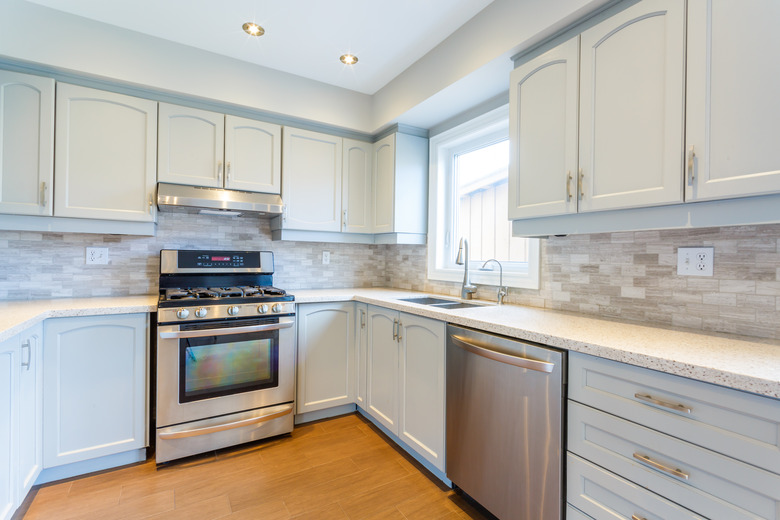GE Profile Dishwasher Troubleshooting
It's easy to take your dishwasher for granted until things begin going awry. While there are many different GE dishwasher models, many problems can be caused by similar woes, and standard GE dishwasher troubleshooting might help you get back into a squeaky-clean state.
Tip
GE is helpful with user manuals and troubleshooting tips on their website. Even better, they have lots of informative videos to get you going.
Common GE Dishwasher Problems
Common GE Dishwasher Problems
Failure to drain correctly is the most common complaint from homeowners. Others include things like soap cups not closing, the dishwasher being smelly, not running at all, not cleaning properly and so much more.
It's important you frequently clean fallen debris away from the drain, periodically clean out the filter, always use the right kind of detergent with your local water type and keep the machine clean, including the seal around the door. If you've got both a garbage disposal and the dishwasher feeding into your kitchen sink drainpipe, always make sure you've run the disposal before you do a dishwasher load because anything blocking the kitchen sink can prevent water from draining, causing it to back up and stay in the machine.
Always make note of when these issues began because if things were running fine and now they're not, there's recent cause. If it has never drained properly, for example, the dishwasher was likely installed wrong. It needs a drain loop positioned high – your model's user manual will give you the proper height it must be installed at. Remember, user manuals are easily searched and downloaded online if you don't have yours.
Common GE Dishwasher Error Codes
Common GE Dishwasher Error Codes
- If you're trying to start the dishwasher and it's stubbornly
refusing to do so while displaying a code like 3H or 8H, it's a simple
issue – someone set the dishwasher to do a "delayed start," and the number is how
many hours away the cycle will begin. To end this, either punch "delay start"
until the indicator goes off or use the start or start/reset button; press it and
hold it for three seconds until it cancels the cycle. - An "H20" code means not enough water is reaching the
machine. If it only appears in the 1-hour wash cycle, you'll need to schedule a
service visit. But for all other modes, check that the inlet water hose isn't
kinked. If it's kinked, straighten it out; if not, service is needed. - The "C3" code means it won't drain, which can be caused by
power surges and such. Try disconnecting the power via turning off the circuit
breaker for at least 30 seconds, then reset the dishwasher. If this error
continues, contact service. - The "999" code means different things depending on your
model. If you've got the "floor protect with alert" feature, it means there's
possibly been a leak detected and the dishwasher won't start in order to
protect your flooring. It's time to make a service call. For other models, the
control panel needs to be reset.
Still Perplexed?
Still Perplexed?
Many things can go awry, but don't panic yet. Rather helpfully, GE Appliances offers a YouTube channel with 48 different videos helping troubleshoot dishwasher issues specifically. From as short as 40 seconds to over 7 minutes long, videos will help you understand things like how to check the air gap or replace a door gasket, what's causing the white film on glasses, how to clear a blocked pump and so much more.
